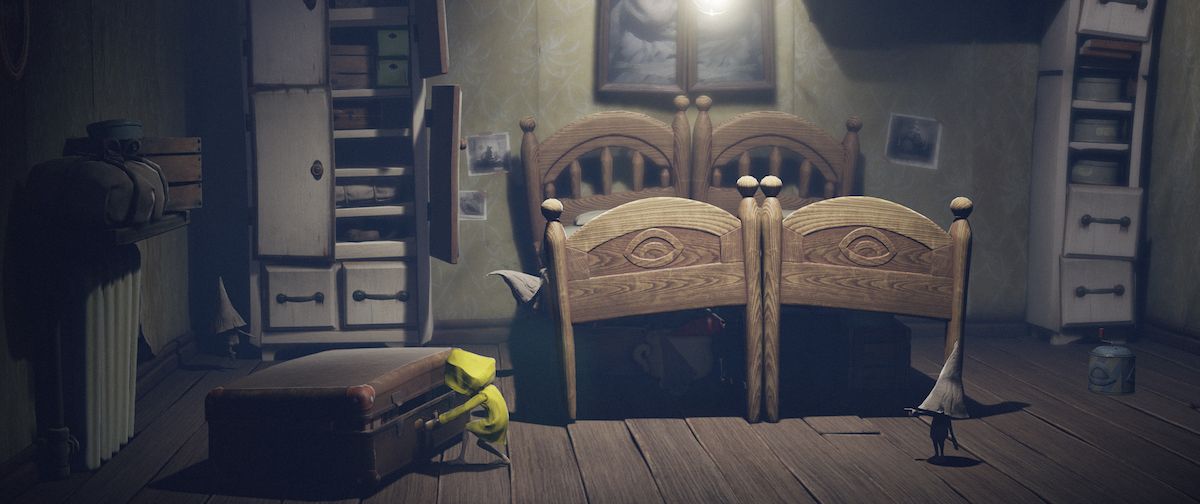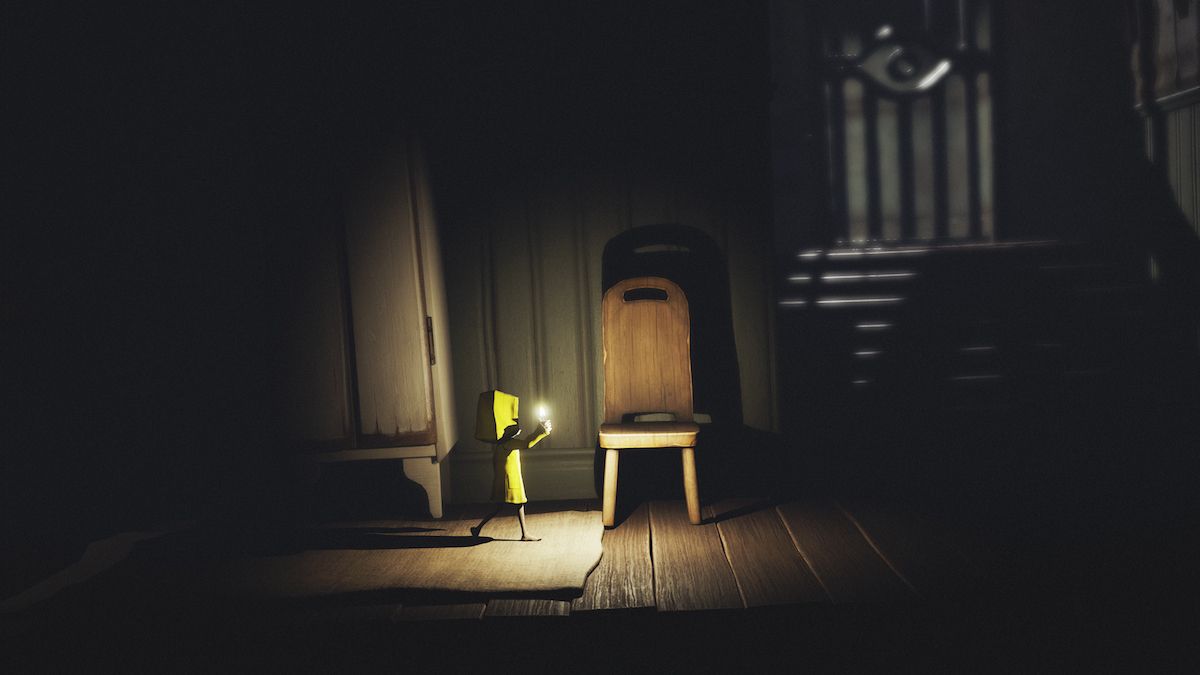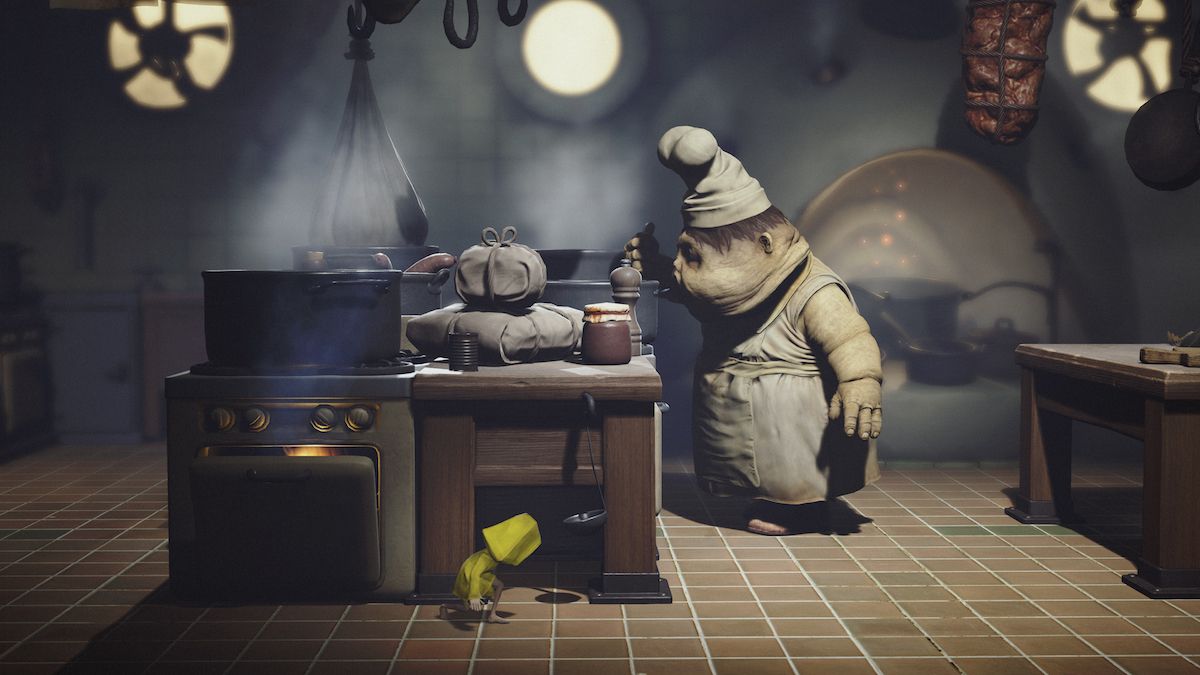When you think Bandai Namco, you might think Dark Souls, Tales, perhaps Tekken; some might even mention Smash Bros in passing. You might, however, not see them in anyway associated with indie games. The type affectionately in love with [predominantly] 2D platforming affairs and/or the physics-based, puzzle-solving mechanics many have come to be renowned for. Of course, Little Nightmares is by no means the kind of game that deserves to be shoe-horned as easily as this. For starters, it’s not exactly 2D; the 3D space certainly making itself known fairly quickly, moving as you do about a somewhat creepy and "exaggerated" interior referred to simply as The Maw — fixed camera following suit like it were a set to some young kid’s cartoon that really never should have made it past board-room.
But it goes without saying developer Tarsier Studios have taken a kindred liking (as much a fair bit of influence) to platformers of yonder. The kind daringly dark and occasionally sadistic when at their most pinnacle. Not just in presentation, but in tone more prominently. And even for all its emphasis on physics, basic platforming and figuring out the correct order, Little Nightmares deserves some notice purely for its art-style, the very thing that got me intrigued with this title in the first place. The stop-motion-esque, model-made look to both the environments and the characters that dwell within this mad-house inherit both a physicality and child-like vibe a Tim Burton production or perhaps a Roald Dahl story would permeate. Well...Roald Dahl if he suddenly decided one day he absolutely despised kids and thus intended to pull an almighty bait-and-switch on all of them — psychological repercussions aside.
Indeed, there’s a certain degree of twisting and inverting the very concept of innocence that resonates within Little Nightmare’s direction — the name itself a possible namesake spin on the very act of children not having the most pleasant or easy of sleeps at night and some of the level design carries strong youthful manifestations of rather unpleasant scenery. Be it the dreary tone of the rooms you creep, jump and often land almost unannounced through, or the abstractedly hideous imagery of piles of meat in a kitchen or scampering chibi-Pyramid Head's (yes, that name is sticking; look at them, I dare you not to have that image forever ingrained into your head) disappearing into the shadows.
Yet even despite all this palpable imagery, despite the would-be terror generated by sharp knives, boiling pots of food and the very dark itself, Little Nightmares still manages to invoke a near-universal kind of tension that all ages can attest to. Though the demo I played — similar to the one previously shown off at this year’s Gamescom — was relatively short, Little Nightmares offers plenty of momentary dread and [on extreme] panic during the more stealth-orientated sections. During these parts, the player-character — essentially an animate yellow-hooded doll — is tasked with remaining undetected by what I deduce is an in-house chef of sorts. A chef that, despite his fondness for multi-tasking and shifting between dishing up foods and making meals, is not the most pleasant figure of a "man" you can gaze your eyes on.
Whether it be his/its constant wheezing and coughing (which many health-and-safety nuts will pull their hair out over I'm betting) or its alarming cry the moment it spots you in such stealth sections, Tariser already conjure a quite impressive imagining of terror only kids -- up until now -- could truly understand. Even the non-horror aspects, at one point transferring chunks of meat to turn into a rope-like series of sausages, carries with it a kind of vile and disgusting detail (in both its sounds and its model work), regardless how you feel about sausages, or the very act of making sausages. A lot of the game's stand-alone imagery, to an adult, feels relatively simple, yet I can't help but recognize the possible grotesquery in such simple scenes like this. A disposal area full of discarded worn shoes? Yeah, that's definitely not alright.
Naturally there are some questions that leave unanswered with what I played. Specifically, the ways in which potential hostile characters act when you slip into that state of fleeing your life. Moments in the game could be called into question when you can tell the enemy (in this case the chef) knows where you're hiding yet still, bizarrely, transitions into that seen-before "huh, where'd he go?" animation when it's clear which drawer or table I slipped under. The fact he's more than willing to stretch under an open table to try and grab me yet isn't willing to reach under on others is puzzling on an intelligence/programming front and does leaves me slightly skeptical as to the extent stealth will punish those who don't take things slowly and cautiously. But this is just one scenario, thus it's hard to pin-point or otherwise objectify this model of gameplay without seeing more possible variety in this nightmarish escapade.
But on the whole, the stop-motion, model-size look and vibe to the World of Little Nightmares intrigues me on more than just its physical prowess. The impressive amount of unsettling care and consideration put into even the most meaningless of in-level assets was something I never thought I'd be bringing to light, but Tarsier Studios clearly have the right idea going forward on working with a theme and a narrative they'll, hopefully, explore. I didn't really consider Bandai Namco the indie side-scroller types, but I thank them for giving this humble little studio the opportunity to offer something that feels playfully and stylistically unique. There is beauty in grotesquery after all.



